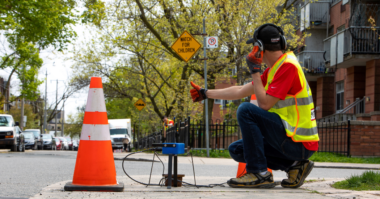Global pump professionals and equipment suppliers have fought with cities and residences for years over the best types of sewage systems. Combined pipes joining stormwater and wastewater were the standard for years, but separated systems are becoming more commonplace. What are the major differences and each method’s pros and cons?
Separated Sewage System
Separated systems direct rainwater and sewage in different, disconnected pipes. Dirty water heads to treatment plants, while cleaner stormwater heads to waterways. Research shows the benefits of separating water sources for a better life cycle assessment of the system. As ideal as this sounds, it has a relative balance of advantages and disadvantages.
Pros
Environmental activists and green infrastructure professionals often choose separated systems because of their cleanliness. They reduce the chances of waste polluting stormwater, saving aquatic species from interacting with foreign bacteria and contaminants. Torrential storms and higher rainfall are happening worldwide, and separated sewage systems make plumping and wastewater infrastructure more climate resilient.
Water treatment professionals also appreciate this separation technique because it accelerates operations. Lower quantities of water enter the facility, leaving the most essential waters to receive sanitation and purification.
Leveraging multiple pipes also prevents overflow from entering plants and waterways, which could cause pipes to burst. It also helps rain drains and grinder systems from overworking themselves, where the accelerated pumping would heighten costs. The space in these devices is reserved for specific types of water, so minimizing additional rainwater is key to keeping them productive.
Cons
Constructing multiple pipes for commercial and residential buildings requires a significant upfront investment for pipes, maintenance and heavy machinery to dig and install the equipment. Runoff prevention measures will also be a part of implementation plans in the short and long term.
If urban floods continue at their frequency, repairs could ruin the return on investment potential separate sewage systems provide. The Environmental Protection Agency predicts the average floodplain will rise 45% and cost $750 million in destruction by 2100.
Combined Sewage Systems
Separating stormwater and sewage is a logical solution, but combined systems carry both streams in the same pipes. Is it possible to create a healthy system this way?
Pros
Combined methods drastically reduce the number of pipes sewage projects require. Fewer moving parts make it more budget-friendly and faster to execute. Pipefitters and related workforces do not have to compromise as much space if they are only installing a few pathways. If a quick turnaround is necessary, combined systems have the obvious advantage.
This simplifies oversight, management and preventive maintenance. Doubling the number and types of piping throughout a city could become unwieldy, especially given the numerous job vacancies in trade work in the modern age.
Cons
A research study performed by ocean conservation nonprofit Surfrider proved 900 billion gallons of untreated sewage are released into surface waters annually. Heavy rainfall easily overwhelms single pipe streams, causing them to bust through dams and seams. Waste and runoff easily fall into nearby lakes, rivers and oceans.
This causes problems for more than citizens worrying about living near contaminated waters. Individuals who make their living from aquatic lifestyles, such as aquaculture and tourism, could see their livelihoods adversely impacted overnight. Treatment plants have a harder time dealing with higher loads and more complex treatment strategies.
The pollution risk is too sizable for many to want combined sewage, so regulatory compliance is also more difficult to obtain with this setup. However, this could be less of an issue as researchers from Finland are finding ways to convert wastewater into fertilizer the agriculture industry can use.
The Top Types of Sewage Systems
Combined and separated methods are the most well-known types of sewage systems worldwide. They each provide boons to citizens, water treatment professionals and plumbers alike. However, their disadvantages are notable when considering climate mitigation and global health.
For safety and environmental reasons, separated systems have the edge over combined variants. Sector experts must develop more cost-effective and accessible improvements to expand water equality and improve resilience.
Photo by Eliobed Suarez (@eliobedsuarez) Unsplash




